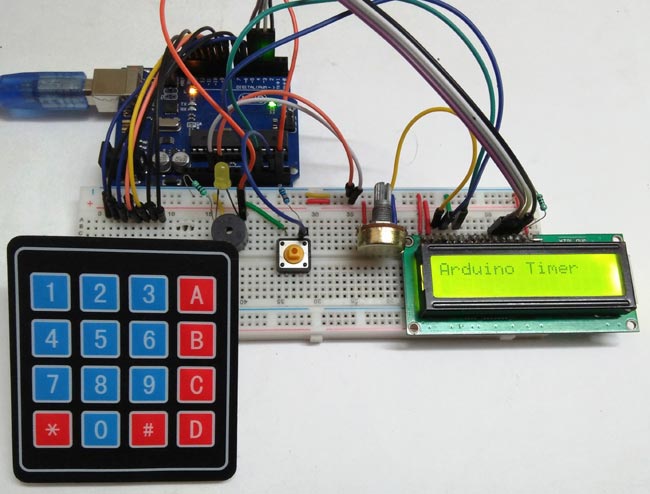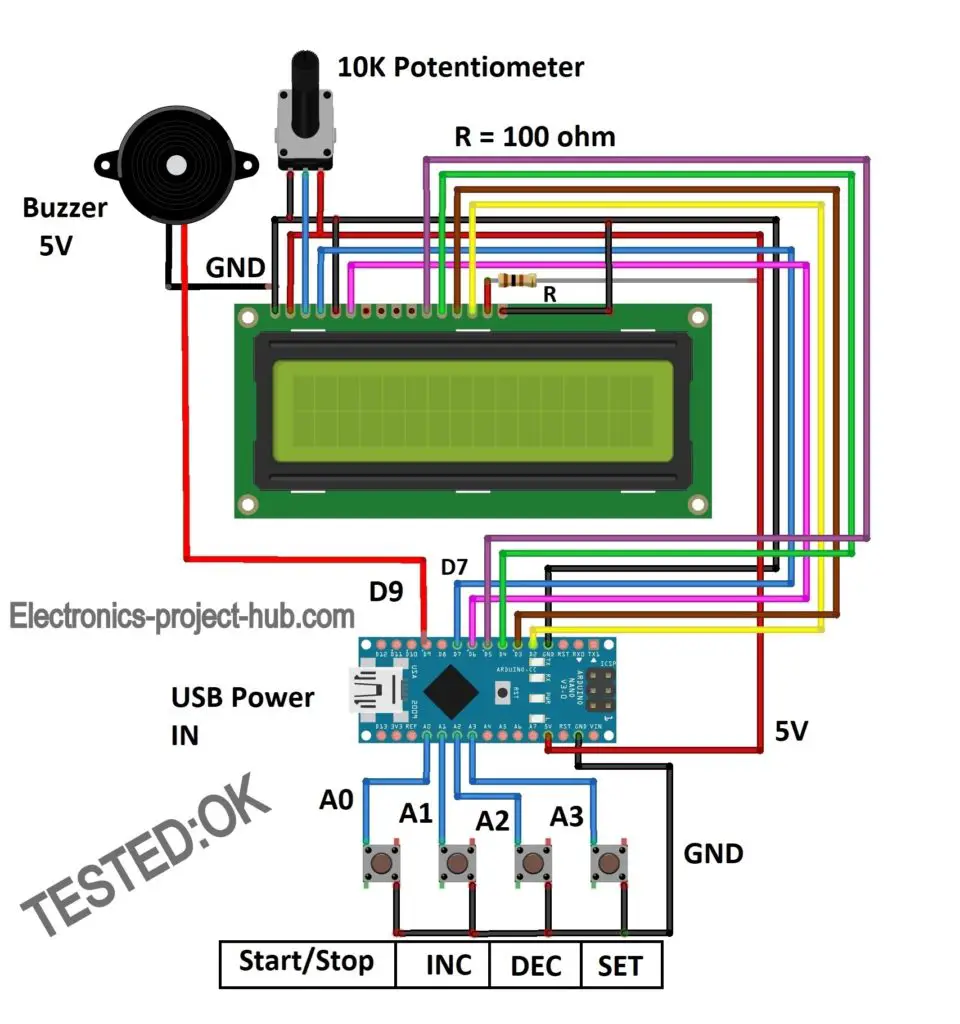How To Make A Timed Function Ina Arduino
Figure 4 shows the display on my serial monitor when I ran this project. LED connected to digital pin 13 void setup pinMode ledPin OUTPUT.
Adjustable Countdown Timer Arduino Project Hub
The advantage of timed events is to perform a specific task when an event occurs Independent of the current task that the microcontroller is performing like sending important sensor data even if the Arduino is stuck in a delay function.

How to make a timed function ina arduino. GoForSmoke May 23 2015 111pm 7 Have you made the LCD work using example code. Waits for a. Like this tjhe loop 1 will be used for 1 second Loop 2 will then be used for another second.
Every second subtract 1 from that. This cycle will repeat every second. The delayMicroseconds function accepts a single integer or number argument.
Start delay delayStart millis. Use a DS1307 Real Time Clock chip with the Time library. Timer speed Hz Arduino clock speed 16MHz prescaler So a 1 prescaler will increment the counter at 16MHz an 8 prescaler will increment it at 2MHz a 64 prescaler 250kHz and so on.
Functions make the whole sketch smaller and more compact because sections of code are reused many times. The millis function counts in milliseconds and starts over from the beginning every 50 days. If digitalRead 2 HIGH value value10.
Syntax of user-defined function in Arduino. Void loop check if delay has timed out if delayRunning. There are ways to adjust to Daylight Saving.
The micros function counts in microseconds which is a lot smaller than milliseconds and it. Decrement preload value lcdsetCursor 00. Int ledPin 13.
If ledOn digitalWriteled HIGH. 21 hours agoMaking that small adjustment every March can have big implications. It accepts a single integer or number argument.
Sets the digital pin as output void loop digitalWrite ledPin HIGH. If you want the display to be in hours minutes and seconds then do that conversion in your display code. There are two required functions in an Arduino sketch setup and loop.
Initialize the digital pin as an output. Int led 13. The Arduino can count and measure time by utilizing the micros or millis functions.
They make it easier to reuse code in other programs by making it more modular and as a nice side effect using functions also often makes the code more readable. Make 1 variable that holds the total time in seconds. Supports millis micros time rollover and compile time configurable number of tasks.
When it gets to zero flash your led or whatever. Adding weekday alarms to the DS1307 RTC functionality. Sets the LED on delay 1000.
This prevents drift in the delays toggle the led ledOn ledOn. Arduino Coding Writing Functions 4 Examples Define the function enclose the statements of the function. Turn led on start delay delayStart millis.
True if still waiting for delay to finish void setup pinModeled OUTPUT. Clock Stopwatch Timer. This number represents the time measured in milliseconds.
Finally connect the Arduino to the computer via USB cable and open the serial monitor. In this tutorial you learn the functionality of Arduino interrupts and how to time events with this function. 10 sec unsigned long delayStart 0.
The code pauses the program for one second before toggling the output pin. ReturnType functionName type param1 type param2 Internal code of the function returnType functionName type param1 type param2. Arduino library for the DS3231 real-time clock RTC ds3231FS.
Call the function use the function by using its name adding any parameters if needed. You will see a sub-menu with two sketches SetTime and ReadTest. The time the delay started bool delayRunning false.
Waits for a second digitalWrite ledPin LOW. Meanwhile the processor is still free for other tasks to. Turn led off ledOn false.
A prescaler dictates the speed of your timer according the the following equation. Our project will request the IP from the DHCP request the current time from the NTP server and display it on the serial monitor. Timekeeping functionality for Arduino.
In your case you then set the time in the functions instead of the button so ex. This library is often used together with TimeAlarms and DS1307RTC. A sub-menu will appear scroll down until you get to the Examples from Custom Libraries section.
One simple technique for implementing timing is to make a schedule and keep an eye on the clock. Instead of a world-stopping delay you just check the clock regularly so you know when it is time to act. Millis on the other hand is a function that returns the number of milliseconds since the program started.
Look for DS1307RTC and highlight it. This alarm clock and timer work without the help of a computer. So this is how a timer can be used to produce delay in Arduino program.
As indicated in the tables above the prescaler can equal 1 8 64 256 and 1024. Sets the LED off delay 1000. Incement preload value if digitalRead 4 HIGH value value-10.
There are a thousand microseconds in a millisecond and a. Turn led on else digitalWriteled LOW. But you dont have to just accept restlessness and reduced functions for weeks.
All the settings can be done on the clock itself and stored in the EEPROM. Using millis instead of delay A well-known Arduino function is delay which interrupts the program for a duration of milliseconds specified as a parameter. Pin 13 has an LED connected on most Arduino boards.
Unsigned long DELAY_TIME 10000. Millis - startTime 1000 do loop 2 millis - startTime 2000 set startTime millis. The way the delay function works is pretty simple.
Arduino-timer - Arduino Reference Reference Libraries Arduino timer arduino-timer Timing Timer library for delaying function calls Simple non-blocking timer library for calling functions in at every specified units of time. Date and Time functions with provisions to synchronize to external time sources like GPS and NTP Internet. Arduino Library for Maxim Integrated DS3231 Real-Time Clock.
ReturnType is one of the well-known types byte int float etc and indicates the type of value that the function will return to the main sketch once executed. Once you have the libraries installed open your Arduino IDE and select the File menu item and select Examples. Use the result of the function optionally your code can do something with the result from the function.

Arduino Countdown Timer With Lcd And Buzzer Diy Electronics Projects

Komentar
Posting Komentar